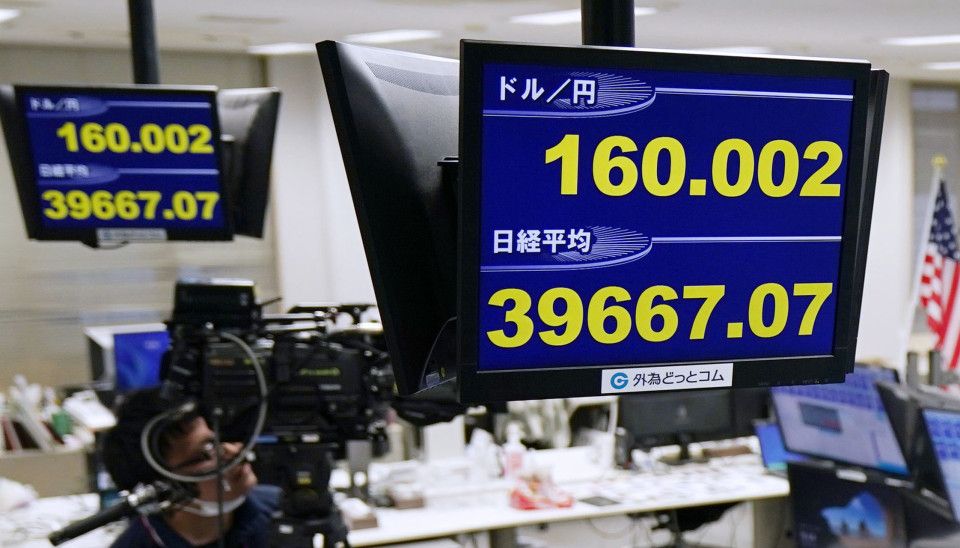
The yen fell past 160 per US dollar to its lowest level in more than 37 years, breaking key barriers despite growing vigilance over further market intervention by Japan to stem its rapid decline.
As reported by Kyodo News, Masato Kanda, Japan’s top foreign exchange official, described the rapid depreciation of the yen as a “serious concern” and promised to take necessary measures against excess volatility that does not reflect economic fundamentals.
Although his comments sparked some dollar selling, the momentum of the yen’s decline has not subsided after crossing the psychological barrier of $160. At one point in trading in New York, the yen hit around 160.60, its lowest level since December 1986.
The Japanese currency depreciated beyond the 160.24 reached on April 29, a level that likely led Japan to intervene by purchasing yen in exchange for US dollars.
“We do not have specific levels in mind, but we are determined to respond to the rapid and disorderly movements led by speculators. In this context, the recent and rapid depreciation of the yen is a cause for serious concern,” Kanda, deputy finance minister for international affairs, told reporters.
“We are prepared to respond to rapid fluctuations whenever necessary,” he said, describing the yen’s decline as “one-sided.” “We are following market developments with a greater sense of urgency.”
Argentina withdraws from the 2025 Japan World Expo
The dollar has been supported by the prospect of the Federal Reserve keeping interest rates high for longer than expected, given recent US data indicating a strong economy.
The Bank of Japan, for its part, raised its official interest rate in March, but it remains around zero percent, leaving a wide interest rate gap between the two nations.
The yen’s fall came a day after Japan and South Korea expressed “serious concern” about the rapid depreciation of their currencies.
Last week, the United States put Japan back on its currency manipulator watch list, raising speculation that authorities may find it more difficult to intervene in the currency market, traders say.
Although daily breakdowns have not been published, the Finance Ministry has said it spent about 9.79 trillion yen ($61 billion) between April 26 and May 29 to stem the yen’s rapid decline against the dollar.
Japanese households continue to struggle with the rising cost of living, largely because the weak yen makes imported goods more expensive. Prime Minister Fumio Kishida is attempting additional inflation relief measures.
Source: https://reporteasia.com/mercados/2024/06/26/yen-cae-minimos-frente-dolar-amenaza-intervencion/

